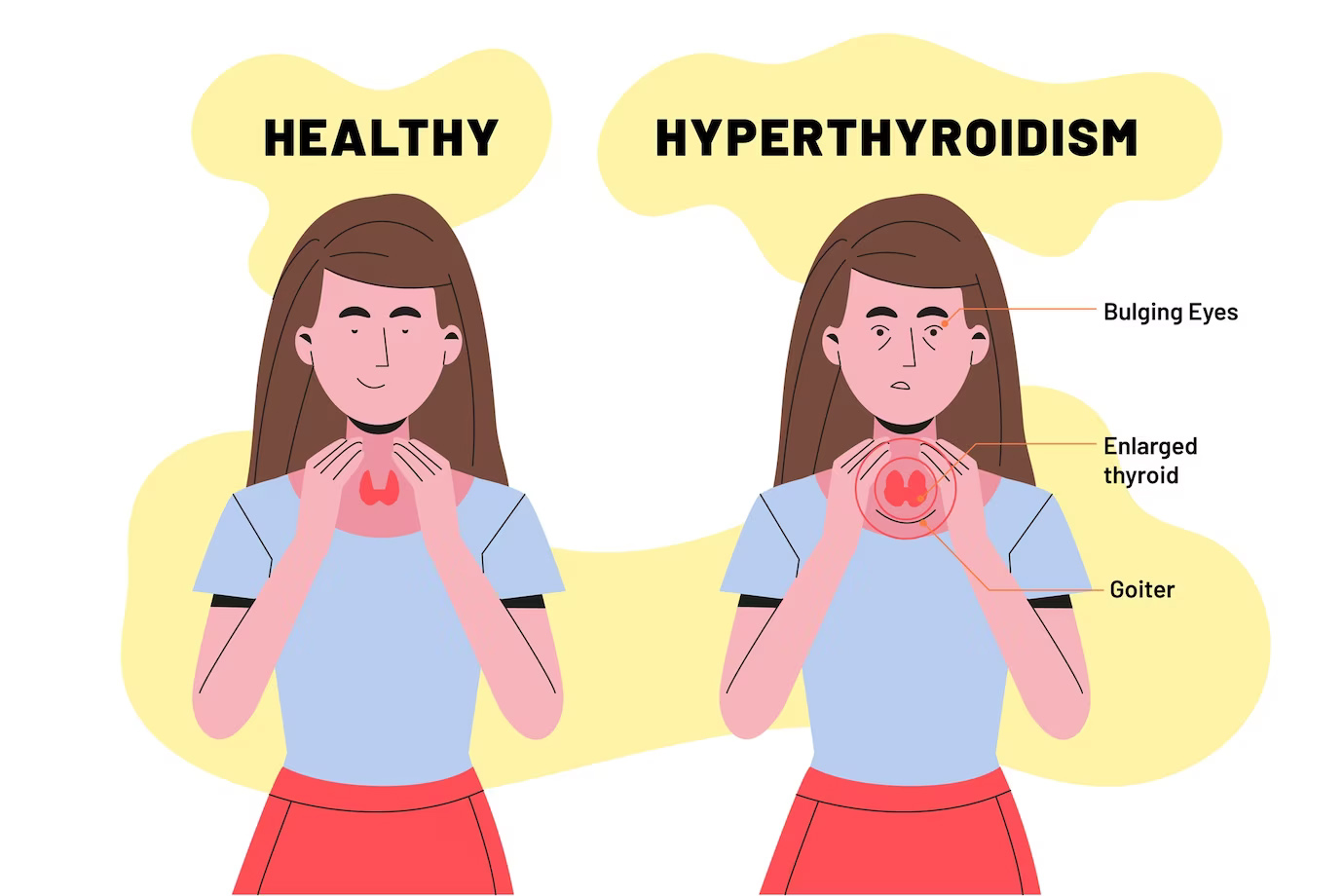Diseases | Women's Health | Hypothyroidism
The thyroid is a butterfly-shaped endocrine (hormone secreting) gland in the neck that is found on both sides of the trachea (windpipe). It secretes the hormone Thyroxine which controls the rate of metabolism. Thyroid gland is one of the many endocrine glands such as adrenal, pituitary, pancreas, testes, etc.
The function of the thyroid gland is to take up iodine from the foods that we eat and to convert it into thyroid hormones namely Thyroxine (T4) and Triiodothyronine (T3) and Calcitonin (which is involved in calcium metabolism). The cells of this gland combine iodine and the amino acid tyrosine to make T3 and T4. Later T3 and T4 are then released into the blood stream and are transported throughout the body where they control the general metabolism (conversion of oxygen and calories to energy). The regulation of the metabolism of every cell in the body requires thyroid hormones. The ratio of production of T4 and T3 is 80:20. However, T3 is about 4 times more potent than T4.
The production of thyroid hormones is under direct control of the pituitary gland. Pituitary is an endocrine gland which is situated at the base of the brain and it secretes certain vital hormones which includes TSH (Thyroid stimulating hormone) or Thyrotropin, besides others. When the level of thyroid hormones (T3 and T4) falls below the required amount, the pituitary gland secretes TSH which stimulates increased production of T3 and T4. As the levels of T3 and T4 keep rising in the blood, the pituitary senses this and reduces TSH production.
The hypothalamus is that part of the brain which produces TRH (Thyrotropin Releasing Hormone). TRH regulates the production of TSH by the pituitary, i.e. it has a regulatory control over the pituitary gland.

Treatment for Hypothyroidism:
Hypothyroidism denotes under activity of the thyroid gland, whereby thyroid gland does not secrete adequate amount of T3 and T4 hormones. Research proven homeopathic treatment offers medicines which stimulate the gland, enabling it to secrete normal levels of hormones.
